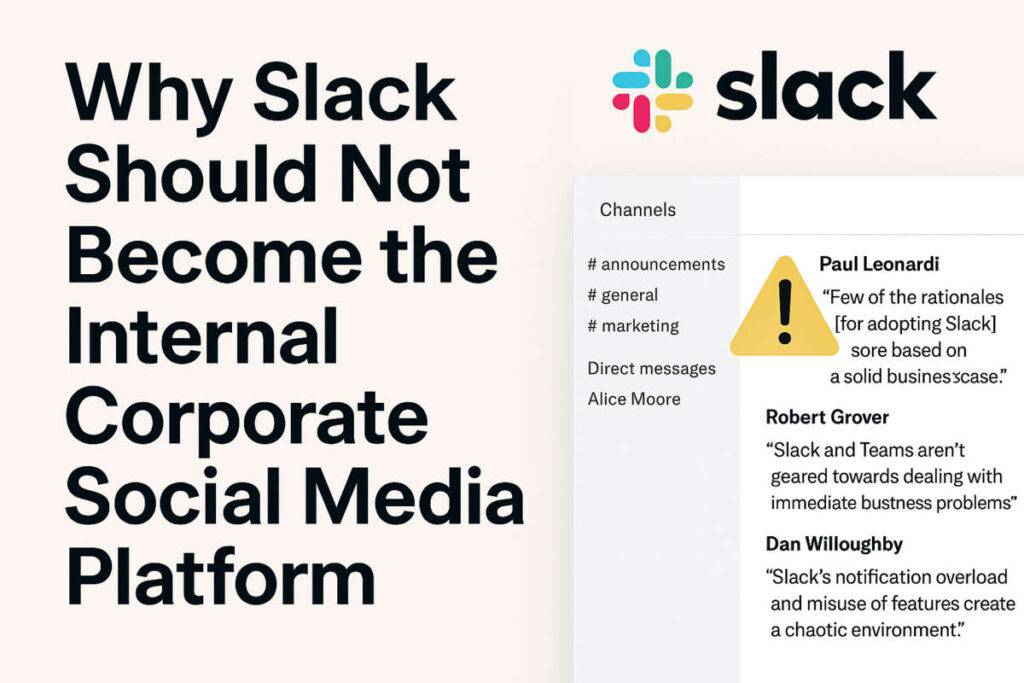Slack has become a staple in workplace communication, but its growing role as a social hub raises serious concerns. While some hail it as the future of internal corporate social media, many experts and practitioners warn that this shift could undermine productivity, clarity, and workplace culture.
Disclaimer: This post is 99% AI generated and is meant as a joke.
Expert Voices of Caution
Paul Leonardi, Professor of Technology Management at UC Santa Barbara, cautions against blindly adopting social tools like Slack:
“Few of the rationales [for adopting Slack] were based on a solid business case… Companies often fall into the trap of assuming Millennials will embrace social tools at work without considering how learning and trust actually develop on these platforms.” [1]
Robert Grover, writing for Staffbase, highlights Slack’s limitations for internal communications:
“Slack and Teams are great for collaboration, but they aren’t geared towards dealing with immediate business problems. Messages get buried, and important updates are lost in the noise.” [2]
Dan Willoughby, founder of Tellspin, points out Slack’s impact on productivity:
“Slack’s notification overload and misuse of features like @channel create a chaotic environment. It’s optimized for attention, not work.” [3]
The Pitfalls of Slack as a Social Platform
1. Information Overload
Slack’s stream-based design means important messages are quickly buried. Unlike traditional intranets or dedicated social platforms, Slack lacks a “front page” for critical updates.
2. Distractions
With gifs, emojis, and constant pings & dings, Slack mimics social media’s engagement tactics—often at the expense of deep work and focus [3].
3. Lack of Control
Admins have limited ability to moderate or restrict content. Anyone can create channels, post messages, and react—making it difficult to maintain professional boundaries or ensure message clarity.
4. Surveillance Concerns
Slack’s analytics features allow management to monitor individual activity, raising privacy concerns and potentially eroding trust [2].
5. Not Inclusive for All Workers
Slack assumes constant connectivity and desk-based work. For frontline or non-desk employees, it’s often inaccessible or ineffective [2].
Final Thought
Slack is a powerful collaboration tool—but that doesn’t make it a social media platform. Companies should resist the urge to turn Slack into something it’s not. Instead, they should invest in purpose-built internal communication platforms that balance engagement with clarity, control, and inclusivity.
References
[1] What Managers Need to Know About Slack, Yammer, and Chatter
[2] 8 Reasons Slack and Teams Aren’t Enough for Effective Internal …
[3] Negative Impact of Slack on Workplace Productivity | Tellspin blog

